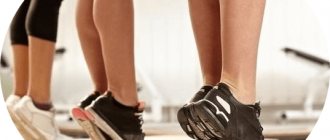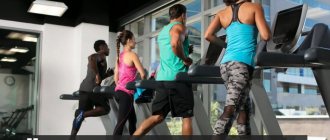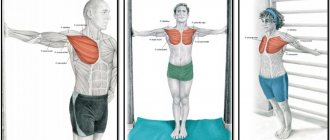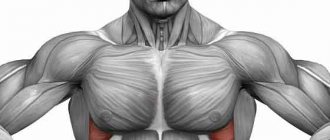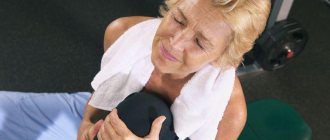Everyone has long known that before any workout you need a warm-up. Many people simply know this and that’s where it all ends. We often observe how some, even seemingly experienced athletes, begin their training immediately with a warm-up approach. Having loaded the barbell with minimal weight, they begin to perform the basic exercise, and for the second approach the working weight is already set. Then a time bomb is launched. Since this is far from a warm-up, such athletes sharply reduce the effectiveness of their training, and the consequences can be disastrous.
Why do a warm-up?
To put it in simple, “automotive” language that is understandable to many, warming up can be compared to starting an engine. In the cold winter season, there are unlikely to be those who, without warming up the car, start abruptly, because it is known that this way the car can be quickly “killed”. And the same thing with warming up, but if a car is iron, then you still have to live in your own body for the rest of your life and it won’t be possible to replace it.
Warm-up keeps joints and muscles healthy; it is with proper warm-up and training that you can keep your body youthful for a long time and improve joint health, which will not become inflamed ahead of time. Joint mobility and careful warming up of muscles and ligaments will prevent any injuries caused by contraction and stretching of muscle fibers during the exercise. In addition, the range of motion improves, because the sleepy and cold muscles are in a compressed state.
In addition, warming up gradually accelerates blood throughout the body, gently accelerating blood circulation and pulse, which smoothly brings the body to heavy physical activity.
What consequences can there be if you don’t warm up before strength training?
- Firstly, by training without warming up the muscles, you can get any injuries to bone, muscle and connective tissue . Tightening of muscles and ligaments in a cold, unheated state is a normal process, but if such muscles are immediately contracted with additional weights and, in addition, stretched, you can get at least a spasm, inflammation, and, worse, stretching and rupture, depending on the external temperature and resistance forces in the muscles.
- Secondly, the joints suffer . Fortunately, modern medicine has come to implantation of joints, but this cannot be called a full life. Unheated joints are a very fragile mechanism, although when warmed up they are able to overcome heavy loads. Starting a workout without including joint warm-up leads to inflammatory processes, deformation of cartilage and deterioration of joint mobility in the future.
- Thirdly, ignoring the warm-up before training at home or in the gym leads to deformation of the ligamentous apparatus , which connects the muscles and joints. Ligaments are also susceptible to stiffening and stretching, so performing a load without warming up can easily injure them, and they take a very long time to heal, or even last a lifetime, just like joints.
Warm up before training. For children and adults
Warm-up is the most important component of any physical training. Before any sports training, it is necessary to warm up the necessary muscles and joints that will be involved in the training process. Many people do not attach much importance to warming up, so very often they ignore it altogether. Failure to warm up can result in serious injury. More than half of the injuries in sports at the amateur level occur precisely because the athlete ignores warm-up. Professionals don’t have this, they are well aware of the importance of warming up, so they always do it.
Why do you need a warm-up? As mentioned above, the main task of warming up is: first of all, to prevent injuries to muscles and joints. However, this is not the only benefit of warming up. Our body is designed in such a way that it loves a gradual increase in load. For example, if an athlete just arrived at the gym and immediately lay down under a large barbell, the weight of which is 90-100% of his maximum, then most likely he will not lift it. What will happen? Many small muscles, which are also involved in any exercise, are simply still “sleeping”. The muscles are not yet ready for heavy load. The technique of performing the exercise will immediately suffer, and the brain will receive enormous stress from such an unprepared action. At best, we will not get injured doing the exercise without warming up. Many will say that they constantly start working out without warming up and there have been no injuries. I will answer: for the time being. About six months ago, I faced the same situation. It was summer and a little colder. As usual, I went to do the bench press, I won’t say that I maliciously ignored the warm-up, no, rather I simply forgot to do it, although I was always aware of its benefits. And so, after the first approach, when I put the barbell in place and got up from the bench, I felt pain in my elbow. The training for that day was completed, moreover, the pain bothered me for another 1.5 - 2 weeks. Acute pain could spontaneously appear in the elbow. Using ointments helped (chondroxide helped the most) and resting the elbow joint. When I returned, I didn’t bother with the same rake a second time. Now I always do a warm-up.
It’s not for nothing that a warm-up is always done in physical education classes before starting more complex exercises: running, pull-ups and push-ups, football, basketball, etc. In addition, warming up is very useful not only for people who exercise. For those who lead a sedentary lifestyle, warming up is almost the only way to prevent muscles from atrophying and at least a little disperse the blood throughout the body. Therefore, as soon as you have a free minute, always do a warm-up at your workplace.
What injuries can you get from training without warming up? Most often, muscles and joints are affected. In most cases, the immediate cause of injury is a heavy load or sudden movement in unheated muscles. Of course, in cold weather the risk of injury is much higher, so in addition to warming up, always keep your muscles and joints warm. For example, running. I know many people who love to run not only in spring, summer and autumn, but also in winter they do not deny themselves physical activity. And it’s already freezing outside, even doing a warm-up before running, it’s quite difficult to warm up the leg muscles well. Therefore, in cold weather, I recommend wearing either special winter sportswear, which will better retain heat, or simply dressing even warmer. For running in winter, it is better to use special knee pads; firstly, they will help retain heat, and secondly, they will slightly reduce the load on the knee joint. Joint injuries are more dangerous than muscle injuries, so pay double attention to your joint health. Most often, muscle injuries are sprains, which usually go away on their own within a few days. Joint injuries can be very dangerous and sometimes even require surgery. And all because the cartilage tissue that makes up the joints is restored much worse than muscle fibers. You've probably noticed that older people often have problems with joints, primarily due to wear and tear of the joints, injuries in youth, and also because older people have even worse joint recovery than younger people.
How to warm up Warm up does not require much effort, everything is done very simply and quickly. Often, warming up before a workout may take 5 minutes or even less. The main task for us is to warm up and stretch the muscles. We will warm up with quick movements, so, exercises for warming up and toning the muscles:
- Swing your arms forward/backward to warm up your shoulders
- Flexion and extension of the arms at the elbow joint to warm up the elbow joint
- Rotation of the brushes in one direction and the other
- Rotation and tilt of the head
- Moving your shoulders forward and back
- Torso tilts forward/backward/left/right
- Squats are the best exercise to warm up your legs.
- Raising your toes, stretching your calf muscles
And some exercises to stretch your muscles.
- We bend our torso forward and grab our toes with our fingers. If it turns out easy, in the same position, touch the floor with your palms. 5-10 seconds, no more needed
- One hand behind the head, the second from below we try to grab the first. We alternate hands.
- Place your arms straight behind your back and try to raise them as high as possible
- Straight arms at shoulder height, spread your arms back, bring your shoulder blades together
- Raise your legs straight at the knees as high as possible
There are other exercises, use those that are poisonous. The main thing is not to forget that the warm-up should be light without heavy loads on the muscles and joints. I also recommend finishing any warm-up with a few push-ups and pull-ups on the bar.
© sportlife.info
How to properly warm up before training: warm-up plan
Any workout should start with a light cardio load: it can be walking, jogging, an exercise bike, jumping rope, or a slide. These are any exercises that warm up the body and gradually increase the heart rate without contracting the muscles, as with weight equipment and exercise machines.
Under no circumstances should you start warming up abruptly; this applies not only to the strength of extension or range of motion, but also to speed. You need to start warming up slowly, gradually increasing the pace, and then the range of movements.
The main sign that the muscles are really warm is a feeling of warmth in the muscles and sweating. When the first sweat appears, this means that the body has warmed up enough and you can start exercising.
Features of warming up in the gym before training
In the gym, the choice of warm-up methods is large: this is also a cardio zone, in which all exercise equipment is located - from exercise bikes and ellipsoids to treadmills and steppers, as well as other equipment.
You can also warm up in the gym using simple equipment: sliding on slides, spinning on a grace machine, jumping rope, hula hoop, and the like.
The principle of warming up on cardio equipment is the same: starting at a slow pace, gradually increase the speed, while using pulse sensors to keep your heart rate in the fat burning zone. On average, 120-130 beats per minute is enough to warm up. Do a cardio warm-up for 5-7 minutes, then slow down to a gentle walk for the last minute.
Effective sets of exercises for all muscles for men and girls
A good warm-up fully prepares the muscles and ligaments for training, but does not provoke rapid fatigue.
A high-quality heating complex consists of the following loads:
- general;
- spot.
The general warm-up includes cardio exercises that last five minutes. Cardio activates your metabolism and cardiovascular system. Jumping and running are suitable as active loads.
Important! To properly warm up your joints, you need to make circular movements with your head, limbs, and body.
A targeted warm-up is necessary for those who intend to work with heavy sports equipment - dumbbells, kettlebells and barbells. Targeted warm-up exercises for specific joints are done in several approaches using light strength equipment. If during the main workout you have to work out the muscles with your own body weight, doing pull-ups on the uneven bars, then the warm-up should include push-ups with a simplified technique.
Many beginners equate warming up with stretching, but these are completely different concepts from a fitness point of view. Stretching is a more complex type of physical activity, which is started only after the muscles have fully warmed up.
Warm-up for men and women differs in its specificity. At the stage of preparation for sports activities, men need to pay attention to working out the muscles of the torso - shoulders, arms, sternum and abs. Men's training is based on strength exercises, so special attention should be paid to the joints when warming up. At the stage of preparation for the main training, girls should first of all stretch the muscles of the lower body - legs, hips and buttocks. Fitness techniques for preparation should be light, excluding work with heavy equipment.
There are effective warm-up complexes for both men and women that will help you quickly prepare for the main training.
Universal – for the whole body and any muscles
A universal warm-up suitable for both sexes.
What the complex looks like:
- Working out the neck: to stretch the muscles, you need to make circular movements with your head in different directions.
- Shoulders: Make circular movements with your shoulders (back and forth) for a minute.
- Body: Place your hands on your waist and draw figure eights with it. You can also tilt it in different directions.
- Legs: do light squats and jumps. To warm up your knees, you need to raise your bent leg to each hand in turn.
You can add cardio exercises to your general warm-up, for example, jumping rope.
Exercises for warming up the whole body at home
- Start by walking in place, adding breathing techniques, raising your arms out to your sides.
- Perform side steps, and the pace should be energetic, 1 minute is enough.
- Raise your knees to your chest one at a time, as in aerobics, then, at the same pace, perform heel thrusts to your buttocks.
- Tilt your body to the sides alternately.
Warm up for the neck
- Turn your head to the sides 5-10 times in each direction.
- Bend to the sides (ear to shoulder) 5-10 times.
- Make a semicircle with your head, rolling your chin over your collarbones from side to side, without throwing your head back.
Warm-up for arms
- Circular rotation of the arms in the shoulder joints in both directions 5-10 times.
- Circular movements in the elbows and hands 5-10 times.
- Stretching your arms parallel to the floor with an emphasis back, palms behind your back.
Warm-up for the back
- Bend your torso forward on straight legs, without rounding your back: 10-15 repetitions.
- Slow twisting of the body towards the floor and back up. Gradual relaxation of all parts of the spine – 5 times.
- Lock under the knees, rounding and arching the spine (similar to the “cat” exercise).
- Twisting (turning) the body from side to side. Perform without sudden movements.
Leg warm-up
- Circular rotation of the pelvis in one direction and the other.
- Circular rotations of one leg at the hip joint on both sides. On the right and left leg, respectively.
- Extension of the legs at the knee joints while holding the leg overhang.
- Circular rotation of the ankle joints on both sides.
- Bend your torso towards your straight legs while standing, holding the flexion of your hamstrings for a few seconds.
- Stretching the adductor surface of the thighs by rolling from foot to foot.
- Stretch the quadriceps of the thigh with traction of the heel back to the buttocks.
- Calf raises with a heel roll to stretch the calf muscles.
Warm-up exercises
The importance of warming up is difficult to overestimate; it is a fundamental part of training. First, a good warm-up before exercise reduces the risk of injury. Secondly, warmed muscles work more efficiently. Warm-up should include a complete and well-thought-out set of exercises that will help prepare your body for training.
Stage 1: Walking in Place
It is better to start your warm-up by walking in place to warm up your body a little and avoid pulling muscles during dynamic stretching. As you walk, your heart rate should rise slightly and your body temperature should increase. Perform two exercises for about 30 seconds each.
1. Walking with knees up
We begin our warm-up by walking in place. Raise your knees up, synchronously moving your arms along your body. Don't push yourself too hard, start warming up at a gentle, calm pace.
How much to do: 10 knee raises on each leg.
2. Raising hands and knees
And one more gentle warm-up exercise. Continue raising your knees, but now include your arms. Raise your arms above your head and lower them down, bending your elbows.
How much to do: 10 knee raises on each leg.
Stage 2: Joint gymnastics
Joint exercises are a necessary part of the pre-workout warm-up if you don’t want to get joint problems in the future. Joint gymnastics is usually performed from top to bottom, starting from the neck and ending with the feet, but the order of the exercises does not play a fundamental role. Remember to perform rotational exercises both clockwise and counterclockwise.
Joint exercises will be useful, by the way, as a regular morning exercise.
1. Head turns
We start warming up before training with the neck. Turn your head to the right, forward, left, forward, trying not to make sudden movements. Don't throw your head back.
How much to do: 5 turns in each direction.
2. Shoulder rotation
Lower your arms along your body and begin to rotate your shoulders in a circle. Gradually increase the amplitude, trying to stretch your shoulder joints well.
How much to do: 5 repetitions in each direction (clockwise and counterclockwise)
3. Elbow rotation
Before training, be sure to stretch your elbow joints, which receive a lot of stress during upper body training. To do this, raise your arms parallel to the floor and perform rotational movements with your forearms.
How much to do: 5 repetitions in each direction (clockwise and counterclockwise)
4. Arm rotation
We continue the warm-up before training with arm rotations. Raise your arms above your head and begin to rotate them, stretching your shoulder joints well. Move your arms widely and amplitude, the rotations should not be sluggish.
How much to do: 5 repetitions in each direction (clockwise and counterclockwise)
5. Wrist rotation
If you are training your arms or doing planks and push-ups, be sure to give your wrist joints, which receive a lot of stress, a good stretch before training. To do this, bend your elbows and begin to rotate your wrists in a circle.
How much to do: 5 repetitions in each direction (clockwise and counterclockwise)
6. Pelvic rotation
Place your hands on your waist and spread your legs wider than shoulder-width apart. Start rotating your pelvis in a circle, as if you were trying to draw a circle with your buttocks. The feet do not come off the floor, rotation occurs due to the movements of the pelvis, not the body.
How much to do: 5 repetitions in each direction (clockwise and counterclockwise)
7. Leg rotation
Hands remain on your waist, place your feet closer to each other. Lift one leg off the floor and begin to rotate it in a circle, stretching the hip joint. The knee seems to be making a circle, the torso remains stable.
How much to perform: 5 repetitions in each direction (clockwise and counterclockwise) on the right and left leg.
8. Knee rotation
Tilt your body, bend your knees slightly and place your palms on them. Start rotating your knees, keeping your heels on the floor. This is an excellent exercise for warming up the knee joints, which receive a lot of stress during training.
How much to do: 5 repetitions in each direction (clockwise and counterclockwise)
9. Foot rotation
Stand up straight, place your hands on your waist. Lift your knee up. Start rotating your foot, stretching the ankle joint well. Try to rotate only your foot, keeping your shin and thigh still.
How much to perform: 5 repetitions in each direction (clockwise and counterclockwise) on the right and left leg.
Stage 3: Dynamic Muscle Stretching
After joint gymnastics there is a stage for dynamic stretching of different muscle groups. Here are more vigorous pre-workout warm-up exercises that will prepare your body for the challenge.
1. Arm raises for shoulders, back and chest
Stand straight with your feet shoulder-width apart. Arms are spread out to the sides and parallel to the floor. Then cross your arms, bringing them together at your chest. As you do this pre-workout warm-up exercise, feel a pleasant stretch in your back between your shoulder blades.
How long to do: 10 reps
2. Elbow extensions for deltoids and shoulder joints
Stay standing straight, bend your elbows at right angles and raise them parallel to the floor. Bring your hands together. Then spread your arms wide to the sides without dropping your elbows. Feel the work of the shoulder joints and the tension in the deltoids (shoulder muscles) and triceps (muscles of the back of the arms).
How long to do: 10 reps
3. Curls for biceps and triceps
This is a very simple pre-workout warm-up exercise that will help you stretch your arm muscles - biceps and triceps. To do this, move your straight arms back a little and begin to bend and straighten your arms to maximum amplitude.
How long to do: 10 reps
4. Abdominal and oblique twists
Stand straight, spread your legs wide. Stretch your arms out to the sides until they are parallel to the floor. Begin to alternately turn your body to the right and left. The rotation should be accomplished by twisting the body, not rotating the pelvis. This exercise is very useful for warming up the abdominal muscles.
How much to do: 5 repetitions in each direction
5. Side Bends for Abs and Obliques
And another effective exercise for the abs and oblique muscles. Place your hands on your waist and begin to alternately bend to the right and left, stretching behind your outstretched arm. This exercise is also useful for relieving tension from the back and straightening the spine.
How much to do: 5 repetitions in each direction
6. Bending for the back and spine
This is a very simple and extremely effective exercise not only for warming up before training, but also for relaxing the spine. It can be performed if you feel tension and stiffness in your back. Sit in a shallow half-squat, place your palms on your hips, and have a slight arch in your back. Round your spine at the thoracic region as you rise slightly from the squat. Then arch your back again.
How long to do: 7 reps
7. Squat Bend for Back and Shoulders
Lower yourself into a deep sumo squat, with your back slightly tilted and your palms on your knees. Start bending first to one leg, then to the other. Do this exercise to warm up before your dynamic workout.
How much to do: 5 repetitions in each direction
8. Tilts to the floor with a turn
Stand up straight, spread your arms to the sides, place your feet wide. Start bending towards the floor, turning your body and trying to touch the floor first with one hand, then with the other. Keep your back straight, do not strain your neck, and move your shoulders away from your ears.
How much to do: 5 bends in each direction
9. Squats with arm raises
Spread your legs wide and raise your arms above your head. Lower your pelvis down, squatting until your thighs are parallel to the floor. The arms move synchronously, going down along with the squat. During the squat, do not bring your knees forward of your toes and do not lift your heels off the floor.
How much to do: 10 squats
If you want to make this exercise easier to warm up before training or you are not planning heavy training, you can do half squats:
10. Lateral lunges to warm up the legs
Spread your legs wide, arms folded near your chest. Start squatting, transferring your body weight to your right leg until it is parallel to the floor. dropping into a side lunge. The left leg remains fully extended. Then straighten up and lunge onto your left leg. Perform side lunge rolls to properly warm up your legs before training.
How much to do: 5 repetitions in each direction
11. Lunges to warm up your legs
Stand straight with your feet slightly narrower than your shoulders. Begin lunging backwards while raising your arms above your head. It is not necessary to lower your knees to a right angle; in the warm-up before training, an incomplete range of exercises is acceptable. If you have difficulty maintaining your balance, you can put your hands on your waist or hold on to a wall or chair.
How much to do: 5 repetitions in each direction
If you want to make this exercise easier or you don’t plan on doing heavy training, you can do half lunges.
12. Bends for the back of the thigh
Stand up straight, place your right hand on your waist, and raise your left hand above your head. Place your right leg half a meter forward, resting on your heel, and straighten it completely. Then bend down towards your right leg with your back straight, touching your right toe with your left hand. The left leg bends at the knee. Feel the stretch in your hamstrings, hamstrings, and calves.
How much to do: 5 repetitions in each direction
13. Leg raises to stretch the buttocks
Stand up straight, bend your arms and keep them near you. Lift the knee of one leg up and pull it towards your chest with your hands. Feel the stretch in your gluteal muscles. Then return to the starting position and pull your other leg towards you.
How much to do: 5 repetitions in each direction
14. Leg raises to stretch the quadriceps
Stand up straight, lower your arms along your body. Bend your leg and pull your foot toward your buttocks with your hand. Hold for a second, stretching your quadriceps (front thigh). Then return to the starting position and pull the foot of the other leg towards the buttocks.
How much to do: 5 repetitions in each direction
Stage 4: Cardio Warm Up
In the final phase of the warm-up, we'll do a couple of cardio exercises to further warm up and raise our body temperature. The speed and intensity of the exercise can be increased or decreased, the duration of the final cardio warm-up is 2-3 minutes. The speed and pace of the exercises depends on your capabilities.
1. Running in place with shin overlapping
Stand straight, bend your elbows, palms facing forward. Start running in place, raising your legs high, your arms moving freely along your body. Loop your legs as if you were trying to hit your buttocks with your heels.
How much to do: 15 leg raises in each direction
If running is contraindicated for you, then walk in place at a fast pace, raising your knees high (exercise #1 in the first stage).
2. Jumping rope
Stand up straight, bend your arms at the elbow and spread them to the side - as if you were holding a jump rope in your hands. Start making light and soft jumps in place, imitating jumping rope. There is no need to jump too intensely; after all, this is a warm-up before training, and not the training itself.
How many to do: 30 jumps
If jumping is contraindicated for you, then continue to walk in place at a fast pace, raising your knees high. Engage your arms by moving them up and down (exercise #2 in the first stage).
3. Jumping with arms and legs raised
Remain standing straight with your feet together. While jumping, spread your legs wide and bring your arms above your head. Keep your knees slightly bent. Land softly on your toes to reduce stress on your joints. Breathe to the rhythm of your jumps. These jumps are called Jumping Jacks, and they are great for both warming up and any cardio workout.
If jumping is contraindicated for you, then instead of jumping, alternately move one leg to the side, then the other. Hands move synchronously.
How many to do: 30 jumps
Stage 5: Restoring breathing
Be sure to remember to restore your breathing after performing cardio exercises by taking a deep breath in and out for 30-60 seconds. Choose one of the exercises below or do both.
1. Restoring breathing with a tilt
Raise your arms straight above your head and take a deep breath. As you exhale, tilt your body and arms, exhaling deeply and fully. Feel your heart rate decrease and your rapid breathing calm down.
How much to do: 10 inclines
2. Restoring breathing with squats
This exercise is best suited for those who feel dizzy when tilting their head to the floor as in the previous exercise. Sit down with your arms crossed at your chest and take a deep breath. As you exhale deeply, straighten up completely and raise your arms above your head.
How much to do: 10 inclines
Stage 6: Special warm-up
If you perform strength training with heavy weights, then be sure to also pay attention to a special warm-up. It is aimed at maximum warming up of those muscles that will actively participate in the training. As part of a special warm-up, you should perform exercises from the main complex, but without weights or with light weight (20-30% of the maximum).
Let's give an example of a special warm-up. Let's say you plan to do squats with a barbell weighing 80 kg. This means that before this exercise you should do a warm-up set of 10-15 repetitions with an empty bar or with a bar weight of 20-30% of the maximum weight.
A special warm-up should be performed immediately before an exercise or before training an entire muscle group. Attention, a special warm-up does not replace a general warm-up before training! This is only one of the stages of the lesson, but also very important.
We emphasize once again that a special warm-up is performed after the general one, and not instead of it.
How to warm up before running or doing cardio?
How to properly warm up before running or other cardio exercise? In this case, proceed according to an absolutely similar scheme: a small cardio warm-up for 2 minutes (running in place, light jumping rope) and then joint gymnastics + stretching. And only after that, proceed directly to cardio training, gradually increasing the intensity.
Many people think that it is not necessary to warm up before a cardio workout. However, this is not true. Muscles, joints, and heart receive serious stress while running and jumping, so it is very dangerous to exercise without warming up. Just walking and gradually increasing intensity without doing warm-up exercises for joints and muscles is not enough! Be sure to do joint exercises and stretching before cardio training.
Ready-made warm-up and cool-down for running and cardio
Features of warming up before training:
- We warm up from top to bottom (neck, shoulders, arms, chest, back, core, legs). But this is rather a traditional approach to warm-up exercises; the order of the exercises does not play a fundamental role.
- Warm-up should take place at a dynamic but gentle pace. Your goal is a gentle warm-up and preparation for more intense exercise. You should feel warm throughout your body from the warm-up, but don't overdo it.
- You should start warming up with a slow pace and small amplitude of movements, gradually increasing the pace and amplitude.
- Avoid long static positions; warm-up before training should include dynamic exercises. Do not confuse this with post-workout stretching, which involves freezing in one position for 30-60 seconds to stretch the muscles.
- When warming up before training at home or in the gym, avoid sudden movements and try to perform the exercises smoothly. You should not allow pain or discomfort in the joints (crunching in the joints may be, this is not scary).
- If you work out in a cool room (or outdoors), then dress warmly to warm up faster or increase the warm-up to 15-20 minutes.
- If you know that you will train some part of your body particularly intensely today, then pay special attention to it during your warm-up. For example, on a lower body workout day, thoroughly stretch your hips and knees, and stretch the muscles in your legs and buttocks.
- If you work out at the gym, you can use a treadmill or elliptical trainer as a cardio warm-up. Always start at a slow pace and let your heart rate rise gradually.
Mistakes made when warming up
- Warm-up takes too little time ; often, 1-2 minutes is not enough to properly warm up the muscles and joints.
- Only the part of the body that the athlete will load according to plan is warmed up , for example, the shoulder girdle. But in vain, regardless of the complex, you need to warm up the whole body.
- Warm-up begins with stretching, sharp swings or twisting , and this is very dangerous. Start with cardio, only then do joint exercises and muscle stretching.
- A warm-up is considered to be the first warm-up approach with a light weight. This has already been said, this is an incomplete warm-up; muscles or joints will quickly get injured from this method.

